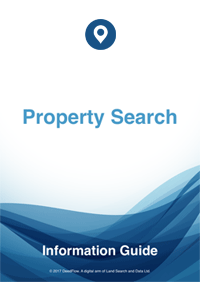Express Easements
Contents
Overview
An express easement is a specific type of legal right granted explicitly by one party to another, conferring certain privileges over the use of land. Understanding the nuances of express easements is essential for both property owners and prospective buyers.
Creation of an Express Easement
An express easement typically arises through a formal agreement between the parties involved. To have legal effect the easement needs to be created by Deed and registered with the Land Registry, so as to provide clarity and legal certainty to the rights granted. In practice the Deed of Transfer created when purchasing a property will usually contain the easement and this will be recorded by the Land Registry in section A of the Title Register. The Title Plan will also show the land affected by the easement using a coloured tint, and the Register will describe what the coloured tint refers to.
Express easements can take various forms, including rights of way, rights of light, rights of support, and rights to access such as water or drainage.
Legal Requirements of an Easement
To exist as an easement the following conditions are necessary:
- The properties cannot be owned by the same person.
- The properties must adjoin each other.
- The right to create the easement must be capable of being created by Deed
- The easement must grant a benefit over one property, which must burden the other property. An easement is listed in the A section of the Title Register for the property that benefits from it and in the C section of the Register for the property that is burdened.
Distinction between Easements and Profits a Prendre in Gross
Easements cannot affect publicly owned land but only land privately owned where two ownerships adjoin. A profit a prendre in gross consists of the right to remove things from publicly owned property. Profits a prendre in gross may consist of rights to fish, rights to hunt, rights to dig peat, to cut wood or dig gravel. Such Profits can be registered separately, where they are created by Deed for a term of 7 years or more.
Profits a Prendre Appurtenant are similar to easements In so far as they relate to rights to cross land, such as a sheep walk, but they cannot be registered in their own right.
Example of an Express Easement
The land has the benefit of the following rights reserved by the Transfer dated 10 November 1982 referred to in the Charges Register:
“EXCEPT AND RESERVING to the Council and its successors in title the owners and occupiers for the time being of the Council’s adjoining or adjacent land (i) all easements and quasi-easements liberties privileges rights and advantages now or heretofore occupied exercised or enjoyed by the Council’s adjoining or adjacent land over or in respect of the land coloured green which would be implied by statute or by reason of severance in favour of a purchaser of the Council’s adjoining or adjacent land if the same had been transferred to such purchaser and the land coloured green had been retained by the Council (ii) full right and liberty to enter upon the land coloured green or any part thereof to remove the existing boundary hedge.”
NOTE: Copy filed
Easements other than Express Easements
Easements may also arise by implication, by prescription, by estoppel or by necessity. These types of easement are not created by Deed and do not appear anywhere in writing, but arise by Common Law. If they become subject to a court hearing and the court confirm the existence of the easement, they can then be registered by the Land Registry upon production of the Court Order, following which they then become express easements and accordingly appear in the Title Register.
Associated Documents
The Title Register may refer to the Associated Documents in which easements are created. These are Associated Documents. Such Deeds may provide considerable detail in addition to that provided in the Title Register and may have a separate Deed Plan attached. Where the Land Registry make a file note in the Register to say a Deed has been copied this means that a copy of the Deed can be purchased using an Associated Documents Search.
Title Register
The Land Registry Title Register holds data relating to the property ownership, purchase price, mortgage, tenure, covenants, rights of way, leases and class of title.
£19.95Title Plan
The Title Plan shows an outline of the property and its immediate neighbourhood, and uses colours to identify rights of way, general boundaries and land affected by covenants.
£19.95Associated Documents
Deeds creating Restrictions, Covenants, Easements, etc. are often kept digitally by the Land Registry and made available for sale due to their invaluable detail and content to assist in further understanding the Restrictions, etc.
£29.95


